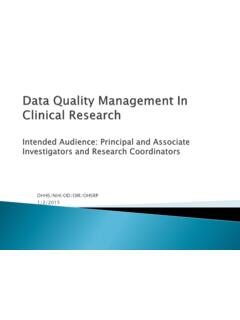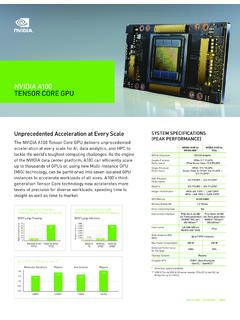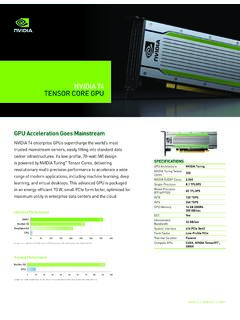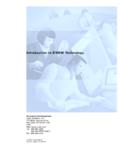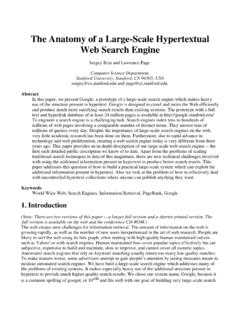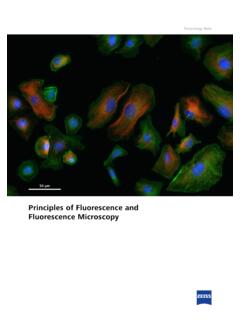Transcription of Guidelines for Human Biospecimen - National Institutes of ...
1 1 Guidelines for Human Biospecimen Storage, Tracking, Sharing, and Disposal within the NIH Intramural Research Program September, 2019; Revised May, 2021; Revised September, 2021 This Photo by Unknown Author is licensed under CC BY-ND 2 Contents Preface .. 3 Introduction .. 4 Definition of Human Biospecimens .. 4 1. Legal and ethical considerations .. 6 2. Collection and storage .. 7 3. Inventory database systems and tracking .. 9 4. Quality management practices including standard operating procedures .. 10 5. Custodianship .. 10 6. Disposal, sharing, or release of NIH biospecimens .. 11 7. Shipping .. 12 Conclusion .. 12 Appendices .. 13 Abbreviations .. 13 Biospecimen List.
2 14 Blood or Blood Components ..14 Body Fluid or Substances ..14 Human Cell Lines (Derived at NIH or by Collaborators) ..14 Stem Cells/Transformed Stem Cells (Acquired from NIH core or NIH collaborators) ..14 Tissues ..14 Tumors ..15 3 Preface The intramural research program (IRP) at the National Institutes of Health (NIH) performs research from bench to bedside, leveraging extensive scientific resources and expertise. The IRP excels at innovative basic and clinical research that translates to new approaches to improve health through prevention, early detection, diagnosis, and treatment. breakthrough research would not be possible without the participation of individuals who selflessly donate biological specimens ( biospecimens ), which are used in research as a bridge between basic and translational research.
3 It is our privilege to use Human biospecimens, and we honor the donors with respectful use of biospecimens throughout the lifecycle of the research project. These Guidelines provide information on the ethical storage, tracking, sharing, and disposal of Human biospecimens within the IRP. There are many important regulations and policies on the ethical acquisition of Human biospecimens, summarized in the Guidelines and Policies for the Conduct of Research in the Intramural Research Program at NIH, which I encourage you to read. The Guidelines for Human biospecimens were originally developed by a committee appointed by the NIH Scientific Directors, who approved them in 2007. The Guidelines were revised and approved in 2012, and the current edition was approved in September 2019, by the Scientific Directors.
4 Michael M. Gottesman, Deputy Director for Intramural Research, NIH 07 September 2019 4 Introduction All biospecimens collected by scientists in the NIH Intramural Research Program (IRP) should be handled and stored following the best practices available. To ensure proper stewardship of Human biospecimens within the NIH IRP, the Deputy Director for Intramural Research (DDIR) and the Scientific Directors (SDs) of the NIH have endorsed Guidelines for Human Biospecimen storage and tracking in relation to these topics: 1. Legal and ethical considerations 2. Collection and storage 3. Inventory database systems and tracking 4. Quality management practices including standard operating procedures 5.
5 Custodianship 6. Disposal, sharing, or release 7. Shipping Definition of Human Biospecimens These Guidelines apply to Human biospecimens, including--but are not limited to--blood and other body fluids, tissues, and other biological materials obtained from humans. Subsets of Human materials, such as derived cell lines that are traceable to a Human subject or patients with linked identifiers or Personally Identifiable Information (PII) as well as those materials that cannot be linked to identifiers, should be handled as independent biospecimens. A list of biospecimens covered by these Guidelines is in the Appendices of this document. Definitions demarcated with Pre-2018 Common Rule definition 1 apply to research approved (or deemed to be exempt or for which no IRB review was required under the regulations) prior to the effective date of the 2018 Common Rule (January 21, 2019)2.
6 Definitions demarcated with 2018 Common Rule definition apply to all research approved by an IRB (or deemed to be exempt or for which no IRB review was required under the regulations) on or after January 21, 2019 and to research transitioned to the 2018 requirements in accordance with Human Research Protection Program (HRPP) policy. While all biospecimens should be handled according to best practices, these Guidelines apply specifically to Human biospecimens that are classified as: 1 HHS, Title 45 Part 46 Protection of Human Subjects (Pre-2018) 2 HHS, Title 45 Part 46 Protection of Human Subjects (2018) 5 Identified, meaning that they or their associated data are linked to a readily available subject identifier ( , social security number, address, telephone number, medical record number, etc.)
7 3 Identifiable Biospecimen (2018 Common Rule definition) meaning a Biospecimen for which the identity of the subject is or may readily be ascertained by the investigator or associated with the Biospecimen . 4 "Individually Identifiable"(Pre-2018 Common Rule definition) meaning that the identity of the subject is or may readily be ascertained by the investigator or associated with the information or Biospecimen . 5 Coded meaning that (1) identifying information (such as name or social security number) that would enable the investigator to readily ascertain the identity of the individual to whom the private information or materials pertain has been replaced with a number, letter, symbol, or combination thereof ( the code); and (2) a key to decipher the code exists, enabling linkage of the identifying information to the private information or biospecimens.
8 6 An example of biospecimens of this type are materials provide by the NIH Department of Transfusion Medicine, where additional materials can be requested, but have no PII directly available to the researcher. Unlinked meaning that the biospecimens were initially collected with identifiers but, before the research use, have been irreversibly stripped of all identifiers by use of an arbitrary or random alphanumeric code and the key to the code is destroyed, thus making it impossible for anyone to link the biospecimens to the sources. This does not preclude linkage with existing clinical, pathological, and demographic information so long as all individual identifiers are removed.
9 7 Biospecimens provided through collaborations may fall into this category, where they were originally collected with PII, which has been stripped. 8 3 NIH, Intramural Research Program, Policy 3016 (2015) 4 45 CFR (e)(6), Protection of Human Subjects 5 45 CFR (f)(2), Pre-2018 Protection of Human Subjects # 6 HHS, Office for Human Research Protections, Coded Private Information or Specimens Use in Research Guidance (2008), 7 NIH, Intramural Research Program, Policy 3016 (2015) 8 HHS, Public Health Service Technology Transfer Policy Manual, Policy 500, Policy for the transfer of materials from NIH Intramural laboratories (2012) 6 Unidentified or Anonymized, meaning that the biospecimens are being maintained without identifiers of any kind.
10 Surgical tissues, cadaveric tissues, and swabs which are pathological waste or discarded materials would be considered anonymized. The act of unlinking biospecimens by re-coding them with an arbitrary code is also a form of anonymization. The terms biospecimens , specimens , and samples can be used interchangeably. The Guidelines apply regardless of whether the biospecimens were originally collected for patient care-related purposes or for research. They also apply regardless of whether or not the individual from whom the specimen was originally collected is still living. The Guidelines apply regardless of whether the biospecimens were acquired from a NIH Core Facility or from a NIH collaborator.
